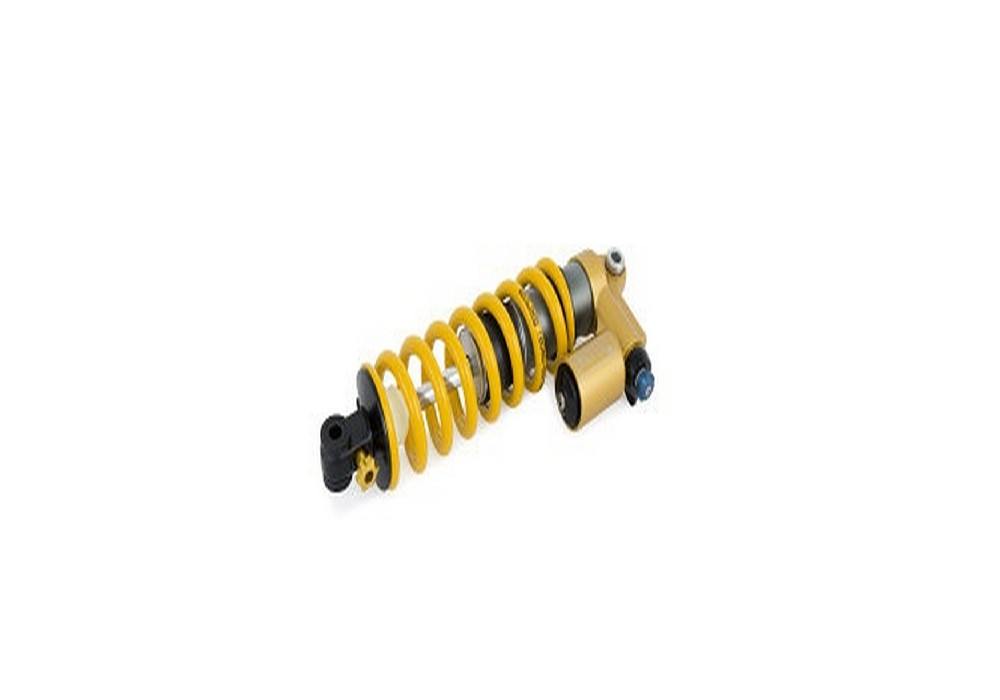Motorcycle suspensions:
In a motorcycle, its two tyres are connected to the chassis by a system of suspensions. Whether at the front or the rear, the suspension is almost always provided by a spring (or air pressure) associated with a damper for braking oscillations. Having the right suspension adjustment and correct tyre pressure are quite essential for safe driving; these settings are much more important for a motorcycle than for a four-wheeled vehicle because the slightest loss of grip can lead to loss of control of the motorcycle. The suspensions present in a motorcycle actually have a dual function which is that of comfort and safety. This done by isolating the motorcycle rider from vibrations on the road or bumps. This brings about some level of comfort.
Also Read: James Bond Motorbikes
The suspension in the front tire is usually made of two sliding tubes incorporating springs and / or hydraulic dampers (telescopic fork), but many other systems exist or have existed.
Components of the suspension
For the sake of simplicity we will break down the “suspension” into 2 categories which are mainly based on their functions:
- The Springs
- The Dampers
We shall begin with a detailed analysis of the springs.
Springs: The main function we have for the springs is bearing the weight of the motorcycle and this gives way for the tyres to be able to continue keeping track of the surface of the road in as much as the motorcycle may be changing positions as it cruises along.
What usually happens is when the rider passes over a bump for instance, the spring rather compresses and this gives room for the tyre to move vertically. When the tyre is going down the slope, the spring now extends which in turn releases all the energy. So, in an ideal situation, we will have the spring compressing and later extending itself without the tyre ever leaving the ground.
Interesting Story: 14 day inspiring journey on Bullet Classic 350 from Pune to Ladakh
Damping : So we must have understood from the above explanation that it is the spring that controls the upward and downward movement of the tyre but now I believe the question that poses itself is; at what speed? Reason being we don’t just expect to have the movement at some random speed. This speed has to be controlled. It is here that the dampers come into play. The Dampers control the speed at which the tyre moves in the upwards and downwards directions. So what the dampers actually do is they prevent the spring from acting too quickly. The compression of the spring is controlled by a compression damping of the damper meanwhile the extension of the spring is controlled by the rebound damping of the damper. Other noticeable features of the suspensions are
The fork:
This is the front suspension system found most in current production.
- The shock absorber combination (s):
Generally in addition to the swing arm, the shock absorber handset acts exactly like a fork, but with less guiding functions.
- The swing arm:
Usually located at the back of the motorcycle, it allows the movement of the rear tyre by acting as a lever arm. It can also be an element of the front suspension. Either by completing the fork, or by replacing it.
As earlier mentioned, the purpose of the suspension is to ensure that the tyres are connected to the ground in all circumstances.
And whatever, the state of the road, the speed of the motorcycle, the angle at which the motorcycle is, the braking power. The connection of the tyres with the ground is essential to ensure good guidance and good braking of the motorcycle.
The shock-absorbing suspension due to the condition of the road increases the longevity of the engine and the frame as well, in addition to ensuring a certain comfort for the rider and the passenger of the motorcycle.
Also read: Ossa Motorcycles
When it comes to adjusting the suspensions of motorcycle, you need to first of know if the suspensions are actually adjustable or non-adjustable suspensions. With the latter, the only solution is either to watch out for the types of routes taken when riding he motorcycle or completing adapting to the riding style to suit the bike. Otherwise, it will boil down to adjusting the sag, doing a proper rebound and extension damping, then finally adjusting the ride height.
Read here : Top 10 Production Motorcycles of 2018





































